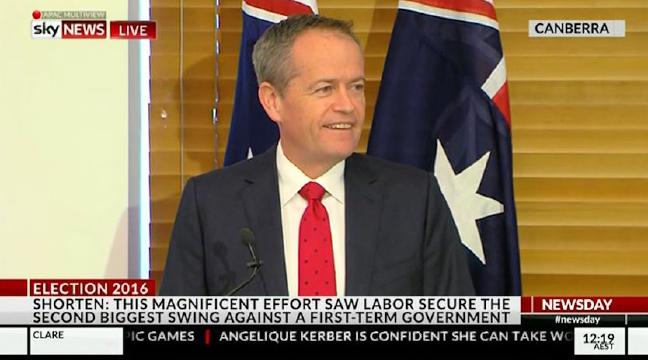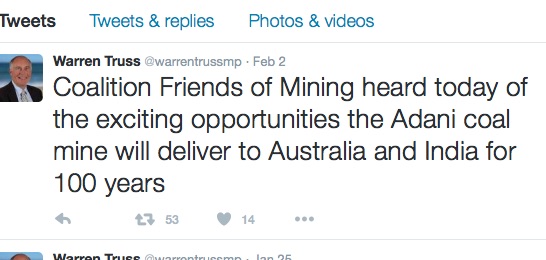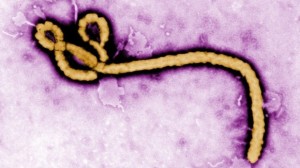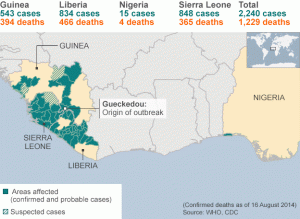Make laugh – not war

By 2353NM
A couple of weeks ago, esteemed blogmaster at ‘The Political Sword’ Ad Astra published a piece asking ‘Why is there so much anger?’ It’s a good question.
Sociologists will tell us that whatever position a person takes on a particular subject, there will be some who agree, some who disagree and some who don’t have a strong opinion either way; they’re ‘sitting on the fence’. Some of those who disagree would listen to an argument designed to change their mind; for others, successfully changing their viewpoint would be impossible.
This played out for all to see in the recent federal election. Out of the 150 House of Representative seats, by the end of the election night there were only a dozen or so that were still in play. The (never-ending) election campaign wasn’t to convince the voters in the 130 odd seats that were almost certain to fall to the red or blue teams, the millions of electrons and litres of advertising ink were all expended to convince a handful of voters to change their votes. Out of the 90,000 people in these marginal (or swinging) electorates, the advertising was designed to convince a small number of voters to support the red, blue, green, orange or other party on 2 July rather than their previous allegiance.
How about we look at this another way. Uncle Toby’s Oats products are available all year round on the shelves of most supermarkets so there is clearly a year round demand. As it is winter in Australia, the sales of this and similar products would currently be higher as people choose to have something warm for breakfast instead of their normal cereal with cold milk. Some people will always purchase Uncle Toby’s Oats regardless of the price or difficulty in sourcing them because of some perceived benefit of the product over other similar products. Others would purchase oats in winter based on the cost or some other criteria without caring about the brand. There are also some who would never buy oats in general or Uncle Toby’s Oats in particular due to any number of reasons from they just don’t like oats through to some perceived shortfall in the Uncle Toby’s product.
In a similar way, some people will always purchase a Ford vehicle, some will buy a vehicle regardless of the brand due to the perceived needs of the consumer being matched as closely as possible by the vehicle they are considering and others would never buy a Ford due to past poor experience, they have a tribal loyalty to another brand or some other reason.
Advertising is designed to move people from the ‘undecided’ column to the ‘always purchase’ column. The belief is that if you convince someone to consider your product, the obvious benefits of your product once they have tried it will convert the consumer to an ‘always’ purchaser of that brand. There are a lot of ways to do this: Uncle Toby’s may hand out free samples at little athletics carnivals or major transport interchanges; Ford might display a car at or sponsor a pop culture festival or perhaps loan vehicles from their range of light commercials to the Gympie Music Muster in South East Queensland; a luxury consumer goods supplier might choose to associate themselves with the Australian Ballet or a series of performances at the Sydney Opera House.
At the same time, other manufacturers of similar products such as Kelloggs and Toyota are attempting to convince the undecided consumer that their products are better for each individual consumer than Uncle Toby’s or Ford. You need something to make your advertising memorable. Comedy seems to be frequently used, such as in this Specsavers advertisement.
PJ O’Rourke is an American political satirist and journalist. He is, by his own account, a conservative Republican who is in Australia for the next month or so on a speaking tour that includes the Byron Bay Writers Festival and a number of ‘think tank’ events in the southern capitals. O’Rourke’s writing skills can be demonstrated by his ‘fawning’ endorsement of Hillary Clinton in the 2016 US Presidential Race – ‘She is the second-worst thing that could happen to America’. O’Rourke was interviewed by Matt Wordsworth on ABCTV’s Lateline. (Slightly off topic, the interview is worth reading solely for O’Rourke’s opinion of Trump.) O’Rourke and Wordsworth discussed the crossover between comedy and commentating:
MATT WORDSWORTH: You and your colleagues at Lampoon — you’re editor of Lampoon, obviously — now, comedians are the go-to commentators.
P.J. O’ROURKE: Isn’t that stupid?
MATT WORDSWORTH: Did you see that coming?
P.J. O’ROURKE: No, no. Who could possibly have seen that coming? I mean, it’s absolutely ridiculous. The role in — if humour has any positive role in covering politics, it’s simply to keep people’s attention for long enough that they will actually look at the serious issues that are …
MATT WORDSWORTH: But they’re increasingly becoming the primary source of news for some people — your Colberts and your John Stewarts and whatnot.
P.J. O’ROURKE: (Laughs) Yes, yes. And I object. That’s not where one is supposed to be getting one’s news. We are and should remain a sideshow. If we can get some more people to go to the big top, great.
The reality is that comedy has been used as a ‘cover’ for making pointed comments since the middle ages. Former Liberal Party Senator Chris Puplick was talking about court jesters in an ’Ockham’s Razor’ interview on ABC’s RN radio network in 2003:
Their job was to give what used to be called ‘frank and fearless’ advice to the monarch. They were the reality check to the absolute rulers of their day. They were the utter reverse of today’s spin doctors. They told the governors what the people needed them to hear, they took the views of the masses to the masters rather than being employed to tell the masses the lies the rulers think they ought to be fed.
It wasn’t just a mediaeval thing, the UK has a long and proud history of comedic comment on ‘sacred cows” such as this Dave Allen clip on his first experience of religion.
Australia also has a rich history of using comedy to comment on the news, from The Mavis Bramston Show, through The Gillies Report in the 1980’s (worth watching the whole 9 minutes for the very young John Clarke at the start and the ‘cover’ of the song ‘Shout’ at the end) …
… to today where Waleed Aly who presents The Project on Network 10 …
https://youtu.be/05Rn_5AqlrE
… and Charlie Pickering who presents ABC’s The Weekly …
… both offer razor sharp commentary on current events.
So why are some people always angry? Some people are always going to find something to be angry about. Regardless of what argument you present on a particular issue, some people are going to absolutely disagree with you. In today’s winner take all society, some of those who will never be convinced to change their mind on their ideas will actively attack you (in an attempt to either change your opinion or challenge your right to have a different opinion) rather than just agree to disagree.
Others will be open to having their opinions changed by discussion. Currently the discussion on a number of issues around the world is being led by those who preach anger, hate and isolation, such as Trump, Christensen, Bernardi, Hanson and so on. While they claim that their argument is sound and consistent, don’t forget that Hanson’s initial speeches referred to the Chinese who were going to take over Australia 20 years ago, showing similar consistency to those who were around in the 60’s and 70’s suggesting that the Greeks and Italians were going to take all our jobs while claiming unemployment benefits (and other farcical stretches of logic). The problem is that if there is no other argument that sticks in people’s minds to reinforce positive attitudes over the carefully calculated scare campaign, the hate preachers gain more converts.
Mark Twain is alleged to have said “A lie can travel half way around the world while the truth is putting on its shoes”. Advertisers use comedy to attract attention and ensure that the sponsored product is kept top of mind. Perhaps the Colbert’s, John Stewart’s, Waleed Aly’s and Charlie Pickering’s have worked out how to produce discussion in respect to sensitive issues, keeping them top of people’s minds (hopefully turning a number of ‘undecideds’ into people with positive opinions on the way), by appealing to those who are looking for relevant information and using comedy as a tool to deliver the message.
Fairfax recently ran an article in The Brisbane Times that demonstrated how the Islamic Council of Queensland is managing trolls who contact them by social media. Instead of getting upset, they use humour to disarm the situation. It’s an example we could all follow.
A little way up the screen is a Dave Allen clip relating to religion. While he was probably best known for his religious jokes, he also frequently told stories about other issues — such as how he lost the top of one of his fingers. If only we could all tell stories like this the ‘hate’ preachers would have nowhere to go.
Dave Allen, Waleed Aly, Max Gillies, PJ O’Rourke and Charlie Pickering are all good story tellers and frequently discuss subjects where others are too afraid to go. While there is the need for decorum and consideration of others feelings, those who wish to provide positive arguments to people who are undecided about a whole range of subjects including religion, drug use, responsible behaviour and so on need to use tools that those looking for information will relate to. Unfortunately, the argument for positive behaviour is usually more nuanced than the alternative, so the message can’t be communicated in a 10 second soundbite that you watch while scrolling through your Facebook feed. Rather than using ‘fire and brimstone’, perhaps a little humour during the explanation of the positive view will delay scrolling long enough to discuss some facts, helping to disarm the hate and anger. It’s fine to disagree — anger and hate is another matter entirely.
This article was originally published on The Political Sword
For Facebook users, The Political Sword has a Facebook page:
Putting politicians and commentators to the verbal sword
Like what we do at The AIMN?
You’ll like it even more knowing that your donation will help us to keep up the good fight.
Chuck in a few bucks and see just how far it goes!














